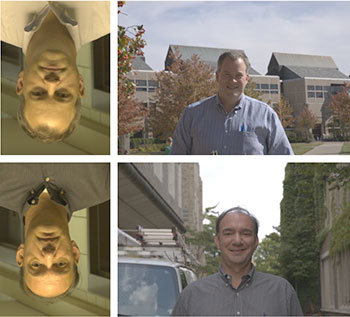Forensic Facial Examiners Can Be Near Perfect

Complete the form below to unlock access to ALL audio articles.
The new assessment provides “the first strong evidence that facial forensic examiners are better at face recognition than the rest of us,” says Jonathon Phillips, a face recognition researcher at the National Institute of Standards and Technology (NIST).
When scores were averaged across all facial forensics examiners—modeling the forensic-lab practice of engaging several examiners to weigh in on face comparison decisions—the experts achieved a near-perfect mark of 0.997.
The research responds to a 2009 National Academy of Sciences report that called for efforts to build the scientific foundation that supports forensic practices. The report recommended that NIST, among other organizations, develop protocols and best practices that form the basis for standards.
Trained facial examiners testify in court on whether faces in two images are of the same person. Until now, however, the accuracy of forensic examiners in matching identity across different photographs had never been tested.

In this initial set of experiments, the scientists tested three groups: forensic facial examiners who are specially trained to compare facial images for law enforcement, people who work in the field of facial recognition but are not examiners, and students. All participants reviewed pairs of faces on a computer screen and judged whether the faces belonged to the same person. The faces were chosen because they were hard to recognize—very difficult for computer algorithms to distinguish between.
The participants performed a standard face-matching test and two new tests devised by the researchers. In all three tests, trained examiners outperformed facial recognition controls and student controls, in that order.
One of the new tests asked test participants to compare closely cropped faces that were displayed upright and upside-down. Participants were challenged to compare faces within 2 seconds—and then 30 seconds.
The examiners’ accuracy improved when they had a longer time to study the faces, and they performed better than other groups with the inverted faces.
“We developed this test to find out if examiners recognize faces differently than untrained people,” Phillips explains. “The results indicate that they do, and we think that their training may teach them to use additional cues. We want to learn precisely how the examiners tell the difference.”
In this perceptual test, the examiners had a time limit to make comparisons. In the laboratory, examiners have access to specialized tools and perform comparisons without artificial time limits.
Phillips says the next round of experiments will study the accuracy of facial examiners using their tools and methods in a laboratory.



